By Richard Cornish
Kylie Balharrie steps inside the family farmhouse in Healesville. Co-owner of the Healesville Hotel with her husband Michael Kennedy, she has just received her copy of Dinner With Jackson Pollock. Inside her kitchen she flips through the pages of this remarkable biographical cookbook.
Just over 12 months ago she was working at the same kitchen bench well into the night for weeks on end testing and re-testing recipes that would be taken to New York to be cooked, style and photographed during the intense two-week photo shoot for the book.
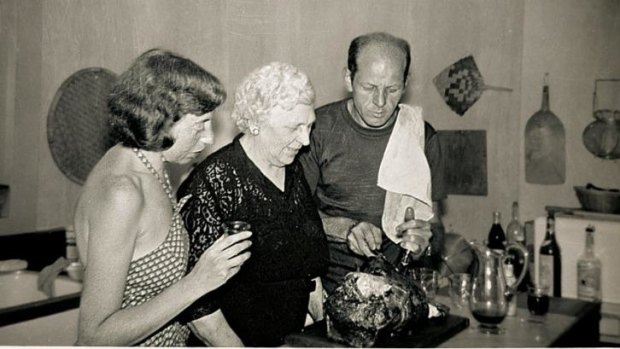
Pollock and Krasner with Pollock's mother, Stella.Credit: Courtesy of Pollock-Krasner House and Study Center
The process revealed much about the artist. Balharrie points to his recipes for bread. "They reveal a side to Jackson Pollock he is not generally known for," she says. "We think of that unruly and undisciplined artist, when in fact he loved the discipline and fastidiousness of baking, with its exact measures and regular rhythms of kneading and the patience involved in proving and shaping."
"How did I get involved in a cookbook making sure the recipes written by one the greatest artists of the 20th century worked in the family kitchen?" she asks rhetorically. "I know the author through a mutual friend."
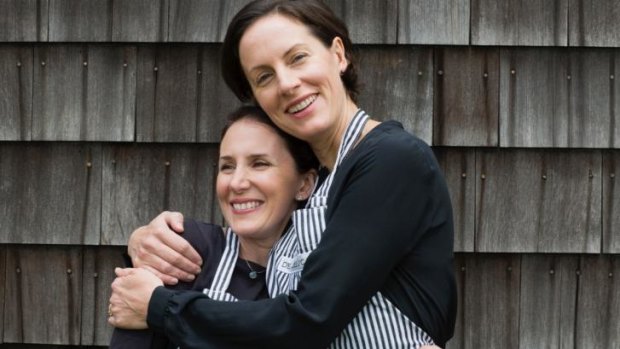
Kylie Balharrie (right) and assistant cook Kate Mizrahi.
The author and photographer is Robyn Lea, originally from country Victoria, now based in New York. Balharrie met her through Kate Mizrahi, contemporary art adviser and avid cook, who also flew to New York last autumn to shop for, prepare and cook the recipes in the book. The recipes came to Lea while she was working at Pollock's former home, which he shared with his wife, fellow artist Lee Krasner.
In 1945, Pollock and Krasner moved from Manhattan to a wooden shingle home and studio, set in a forest on the banks of a creek in the rustic and rural upper reaches of The Hamptons. There they lived with Pollock painting frantically in the studio between expeditions foraging in the forest for ramps (wild leeks) and fishing for clams on the banks of the creeks and waterways.
The couple had learned that much business was done over the dinner table and had held many successful dinner parties in their Greenwich Village apartment. Krasner was not a natural cook but quickly learned a repertoire of fashionable dinner party favourites and, when they moved to East Hampton, a series of rustic and wholesome dishes that reflected the bounty of the seasons and the cuisine of nearby New England.
They lived there until Pollock's death after a car crash in 1956. Krasner continued to live there until her death, and left the property to a trust. The home is now the Pollock-Krasner House and Study Center and their home and studio are kept as house museums with original fixtures and furnishings intact.
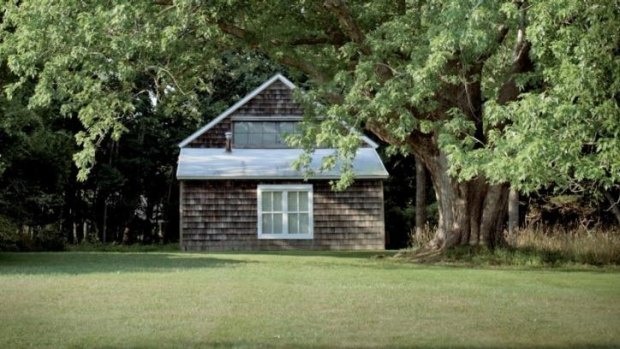
Jackson Pollock's studio.Credit: Robyn Lea
Lea was shown a handful of recipes when she working on a project at the centre in 2012 and then came across a treasure trove of handwritten recipes secreted away in folds of cookbooks and long-forgotten files. She was given the blessing of the directors of the centre, secured a publishing deal, put her production team together and set up a location shoot in April last year.
The team shot in a rented home nearby using props borrowed from the Pollock house and also shot at the Pollock house itself. "It was amazing the access we had to the materials handled by Jackson Pollock," says Balharrie. "We were able to stand in the studio where Pollock worked. The floorboards are covered in splattered paint. The floor is an artwork in itself. You could sense that energy he put into a piece like Blue Poles," she says.
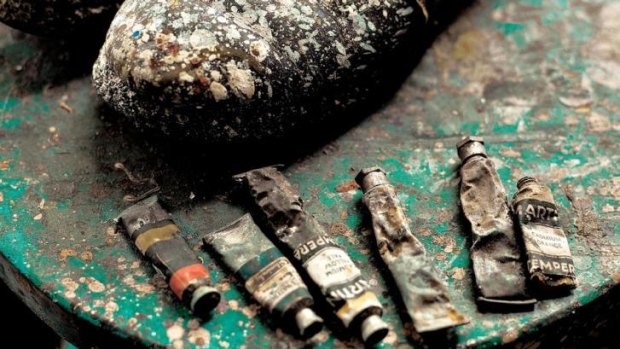
Painting shoes and stool from Jackson Pollock's studio.Credit: Robyn Lea
The recipes in the book give an insight into the domestic side of an artist famous not only for his abstract works but also his alcoholism. The preamble to the recipe for roast beef with yorkshire pudding with Arloie's gravy describes how a soused Pollock, frustrated by a repetitious film shoot that day, overturned the heavy oak dining table during the evening meal. Krasner "adept in her skills of denial as she was as a hostess" as Lea writes in the book, quickly averted an escalation of the situation by declaring that coffee was served in the front room.
Jackson was also a man who integrated himself into the local community. Using a recipe for apple pie given to him by his mother Stella, herself an inventive cook who fed a large family during the depression on farm produce, Pollock took the pie, made with tart apples and spiced with cinnamon and nutmeg encased in simple shortcrust pastry to the local Fishermen's Fair where it won first prize. Krasner remarked in an interview after Pollock's death that, "Of course Jackson was aware of European art but what he identified with was about as American as apple pie."
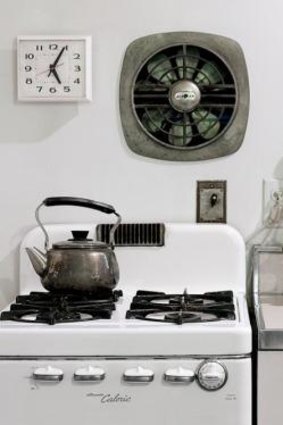
Pollock and Krasner's kitchen, Springs Long Island.Credit: Robyn Lea
Balharrie points to a recipe for shellfish cooked mostly in wine that was found written on the back of a prescription for a cure for alcoholism. "You get to know another side of someone through their food," she says. "I had always thought that he was a self-centred drinker," she says. "But spending time in the shops where he shopped, the beaches where he fished, the house where he lived and the studio where he painted, you get a different sense of the man. And when you eat his food, as we did before and during the shoot, you understand that Jackson and Lee loved to cook, not just to look after and feed each other, but to entertain their large circle of friends and enjoy living in this really beautiful and quite remote, even today, part of New York State."
Dinner With Jackson Pollock is published by Assouline, $95.
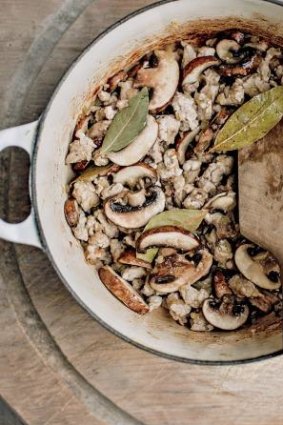
Jackson Pollock's famous spaghetti sauce.Credit: Robyn Lea